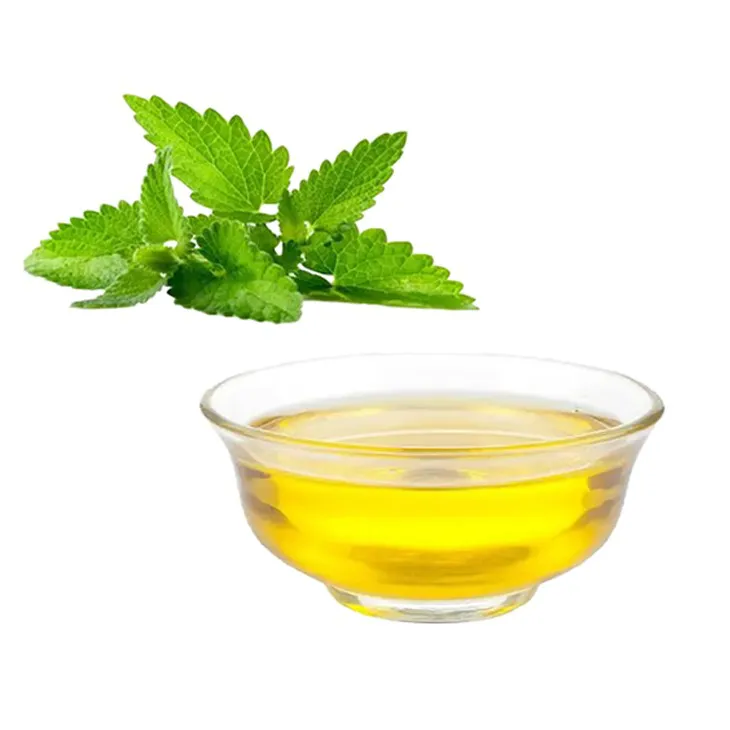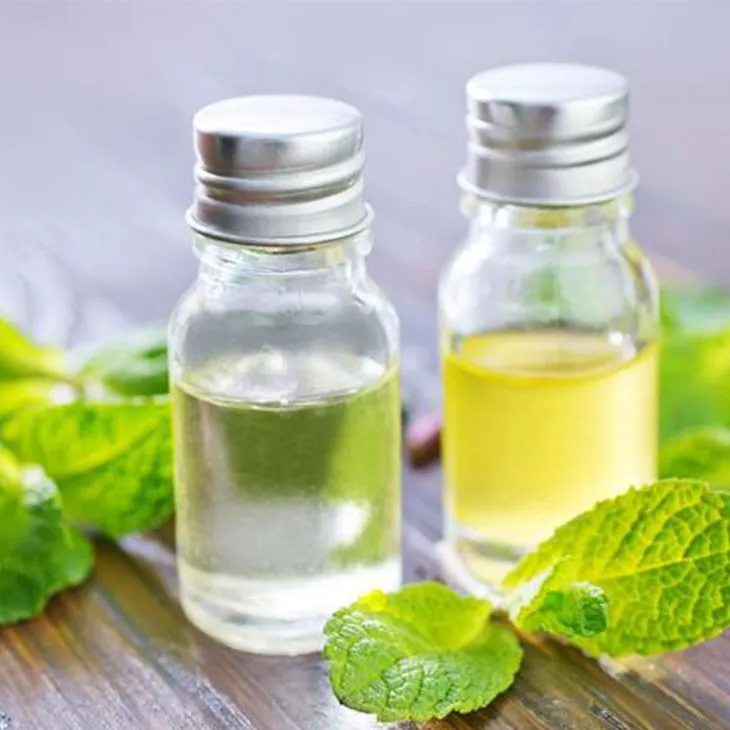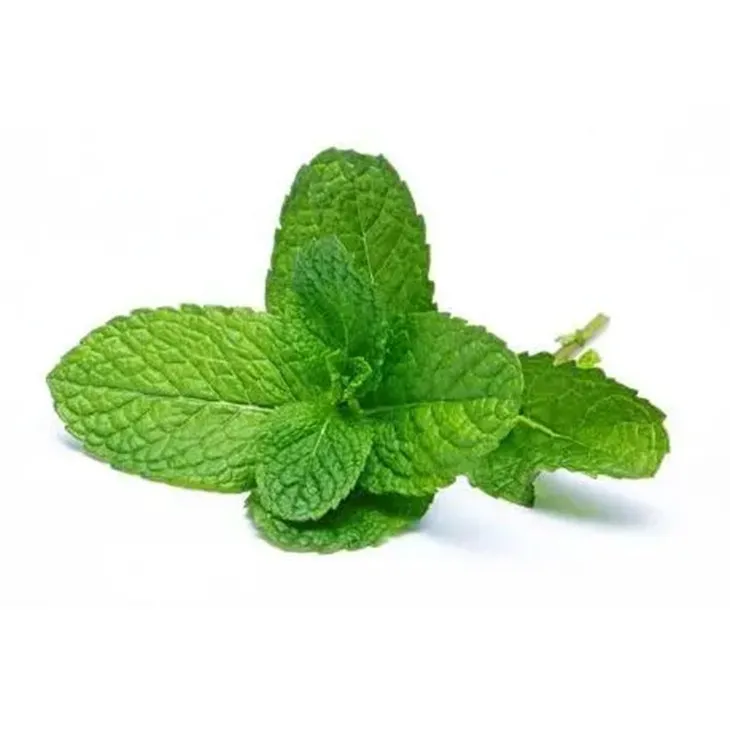- 0086-571-85302990
- sales@greenskybio.com
The process of extracting menthone from peppermint oil.
2024-11-29

Introduction
Peppermint Oil is a well - known and widely used natural product. It is a complex mixture of various compounds, with menthone being one of the most important components. Menthone has a distinct minty aroma and possesses several valuable properties, both in terms of flavor and potential therapeutic applications. Extracting menthone from Peppermint Oil is a process that requires careful consideration and the application of specific techniques. This article will explore in detail the process of extracting menthone from Peppermint Oil, including the initial steps, extraction methods, refinement processes, and the applications of the extracted menthone.

Initial Step: Steam Distillation
Principle of Steam Distillation
Steam distillation is a common and fundamental step in the extraction of menthone from peppermint oil. The principle behind steam distillation lies in the fact that when steam is passed through the peppermint oil, the volatile components, including menthone, are transferred into the vapor phase. This is due to the relatively low boiling points of these volatile compounds compared to the non - volatile components in the oil.Procedure of Steam Distillation
- The peppermint oil is placed in a distillation apparatus. This apparatus typically consists of a flask for holding the oil, a condenser, and a collection vessel.
- Steam is then introduced into the flask containing the peppermint oil. The steam is usually generated from a separate source, such as a steam generator.
- As the steam passes through the oil, it heats up the oil and causes the volatile components, including menthone, to vaporize. The vapor mixture of steam and volatile components then rises up through the distillation apparatus.
- The vapor mixture enters the condenser, where it is cooled down. As it cools, the vapor condenses back into a liquid phase. This liquid contains both water (from the steam) and the volatile components from the peppermint oil, including menthone.
- The condensed liquid is then collected in a collection vessel. At this stage, the collected liquid is a mixture, and further separation steps are required to isolate menthone.

Chemical Extraction Methods
Using Solvents with Affinity for Menthone
Chemical extraction methods play a crucial role in the extraction of menthone from peppermint oil. One approach is to use solvents that have a high affinity for menthone. For example, certain organic solvents can be used. These solvents are selected based on their ability to selectively dissolve menthone from the complex mixture of peppermint oil.- Hexane is one such solvent that has been considered for menthone extraction. It has the ability to dissolve menthone effectively, but it also requires careful handling as it is a flammable solvent.
- Another solvent that can be used is ethyl acetate. It has different solubility characteristics compared to hexane and can also be effective in extracting menthone. However, like hexane, it needs to be used with proper safety precautions to avoid potential hazards such as fire and toxicity.
Challenges and Precautions in Chemical Extraction
- One of the main challenges in chemical extraction is to ensure that the solvent does not react with menthone or other components in the peppermint oil in an unwanted way. This requires a thorough understanding of the chemical properties of both the solvent and the components in the oil.
- Contamination is another major concern. The solvent used for extraction must be of high purity to avoid introducing impurities into the extracted menthone. Any impurities in the solvent can transfer to the menthone during the extraction process, which can affect the quality of the final product.
- Proper handling and disposal of the solvents are also essential. Solvents such as hexane and ethyl acetate are often volatile and can pose environmental and safety risks if not handled correctly. They need to be stored in appropriate containers, and their use should be carried out in a well - ventilated area to prevent the build - up of vapors.

Refinement of Extracted Menthone
Crystallization
Once menthone has been extracted from peppermint oil, further refinement is necessary to obtain a pure product. Crystallization is one of the methods used for this purpose.- The extracted menthone - containing mixture is first dissolved in a suitable solvent. The choice of solvent depends on the solubility characteristics of menthone. For example, if ethyl acetate was used as an extraction solvent, a different solvent may be chosen for crystallization to ensure that menthone can be selectively crystallized out.
- The solution is then slowly cooled. As the temperature decreases, menthone begins to form crystals. The rate of cooling can affect the size and quality of the crystals. Slow cooling generally results in larger and more pure crystals.
- Once the crystallization process is complete, the crystals can be separated from the remaining liquid. This can be done through filtration or other separation techniques.
Filtration
Filtration is an important step in the refinement of menthone.- After crystallization, the mixture of menthone crystals and the mother liquor (the remaining liquid) is passed through a filter. The filter can be a paper filter, a membrane filter, or other types of filters depending on the scale of the operation and the required purity.
- The purpose of filtration is to remove any remaining impurities or uncrystallized substances from the menthone crystals. This helps to improve the purity of the menthone product.
- During filtration, it is important to ensure that the filter does not clog. If the filter clogs, it can slow down or even stop the filtration process. To prevent clogging, the mixture may need to be pre - treated, for example, by diluting it or by removing large particles through a preliminary filtration step.

Applications of Extracted Menthone
Flavor Additive
Menthone extracted from peppermint oil has a wide range of applications. One of the most common applications is as a flavor additive.- It is used in the food industry to add a minty flavor to various products. For example, it can be added to candies, chewing gums, and mint - flavored beverages. The minty flavor provided by menthone gives these products a refreshing taste that is highly appealing to consumers.
- In the oral care industry, menthone is used in toothpaste and mouthwashes. It not only provides a pleasant minty flavor but also gives a cooling sensation in the mouth, which is associated with freshness and cleanliness.
Therapeutic Applications
Menthone also has potential therapeutic applications.- It has been studied for its anti - inflammatory properties. In certain medications or topical formulations, menthone may be included to help reduce inflammation in the body. For example, in creams or ointments for skin conditions where inflammation is a factor, menthone could potentially play a role in alleviating the symptoms.
- Some research has also suggested that menthone may have analgesic (pain - relieving) effects. Although more research is needed to fully understand and confirm these effects, it shows the potential of menthone in the field of pain management.
- Menthone has antimicrobial properties as well. It can inhibit the growth of certain microorganisms, which makes it useful in products designed to prevent or treat microbial infections, such as in some natural or herbal - based antiseptics.
Conclusion
The process of extracting menthone from peppermint oil is a multi - step and complex procedure. It involves initial steps such as steam distillation, followed by chemical extraction methods, and finally refinement through crystallization and filtration. The extracted menthone has diverse applications, from being a popular flavor additive to having potential therapeutic properties. As research continues, new techniques and applications for menthone extraction and use may be discovered, further highlighting the importance of this natural compound.
FAQ:
What is the first step in extracting menthone from peppermint oil?
Steam distillation is a common initial step in extracting menthone from peppermint oil. It enables the transfer of volatile components from the peppermint oil into the vapor phase, which is the starting point for further separation of menthone.
Why are chemical extraction methods used in menthone extraction?
Chemical extraction methods are used because they can take advantage of the specific affinity of certain chemicals for menthone. This helps in pulling menthone out from the complex mixture of peppermint oil. However, it needs careful handling to prevent contamination.
What are the methods for purifying the extracted menthone?
Crystallization and filtration can be used to purify the extracted menthone. These methods help in removing any impurities or unwanted by - products, ensuring a relatively pure form of menthone.
What are the applications of menthone extracted from peppermint oil?
Menthone extracted from peppermint oil has diverse applications. It can be used to add flavor to various products like food, beverages, and oral care items. Also, it can provide therapeutic properties in certain medications, such as in relieving pain or having anti - inflammatory effects.
What are the challenges in the process of menthone extraction from peppermint oil?
One challenge is that peppermint oil is a complex mixture, so precise techniques are required for menthone extraction. In chemical extraction, careful handling is necessary to avoid contamination. Also, during the purification process, ensuring complete removal of impurities can be difficult.
Related literature
- The Chemistry of Menthone Extraction from Natural Oils"
- "Steam Distillation and Menthone Isolation from Peppermint Oil"
- "Purification Techniques for Menthone Derived from Peppermint Oil"
- ▶ Hesperidin
- ▶ Citrus Bioflavonoids
- ▶ Plant Extract
- ▶ lycopene
- ▶ Diosmin
- ▶ Grape seed extract
- ▶ Sea buckthorn Juice Powder
- ▶ Fruit Juice Powder
- ▶ Hops Extract
- ▶ Artichoke Extract
- ▶ Mushroom extract
- ▶ Astaxanthin
- ▶ Green Tea Extract
- ▶ Curcumin
- ▶ Horse Chestnut Extract
- ▶ Other Product
- ▶ Boswellia Serrata Extract
- ▶ Resveratrol
- ▶ Marigold Extract
- ▶ Grape Leaf Extract
- ▶ New Product
- ▶ Aminolevulinic acid
- ▶ Cranberry Extract
- ▶ Red Yeast Rice
- ▶ Red Wine Extract
-
White Peony Extract
2024-11-29
-
Beta Carotene
2024-11-29
-
Kelp Extract Powder
2024-11-29
-
Alfalfa Meal
2024-11-29
-
Chaste Berry Extract
2024-11-29
-
Angelica sinensis extract
2024-11-29
-
Acerola Juice Powder
2024-11-29
-
Tongkat Ali Extract
2024-11-29
-
Cat Claw Extract
2024-11-29
-
Honeysuckle Pollen
2024-11-29





















